Let me tell you a powerful story to explain why watercolour artists need to learn how to draw.
Many artists dive into watercolour painting with great excitement and BIG dreams. But as they continue in their watercolour journey, they often run into a stumbling block.
In their minds, they visualize beautiful watercolour paintings. But they have no idea how to translate those paintings onto paper.
In other words, they don’t know how to sketch their ideas or how to draw composition because they lack these basic skillsets.
Can you relate? If so, don’t worry. I’m here to teach you how to overcome this common obstacle.
In this article, you learn about 7 ways in which developing your drawing skills will help you excel at watercolours. Specifically, this article teaches you about:
- 7 excellent reasons that explain why knowing how to draw compliments knowing how to paint
- 7 awesome benefits you’ll experience from developing your drawing and sketching skills
- The ways in which you might be held back by not taking time to develop your drawing skills
So by the time you’re done reading, you’ll walk away feeling empowered because you’ll know how to take your first steps towards improving your drawing skills!
Table of Contents
1. Drawing Skills Are the Foundation of All Art
It should be noted that you technically don’t need to know how to draw to paint with watercolours.
However, I’m presenting a perspective in which my goal is to teach you about how learning to draw gives you a big advantage in the art world.
Especially since drawing skills are transferable to all art mediums.
Whether you’re painting with watercolours or acrylics, colouring with markers or coloured pencils, or illustrating with ink and pen, all of these art mediums are built upon basic drawing skills.
When you learn how to draw, you start by developing a basic understanding of the following:
- Lines
- Shapes
- Form
- Values
- Light and shadow
- Shading
When you become a bit more experienced, you branch out by learning about topics such as:
- Textures
- Proportions
- Composition
- Perspective
- Depth and dimension
- Colour theory
In a nutshell, learning how to draw teaches you how to develop a well-rounded education in all of these major artistic skillsets.
However, if you start with watercolours but you never learn the basics of how to identify shapes, creates lines, or illustrate light and shadow, you’re going to struggle.
You’ll find it more difficult to create a preliminary sketch for your painting. The composition or scale could be off, and you might not understand where to put the light source.
For example, having basic drawing skills makes this step-by-step watercolour landscape tutorial easier to paint because you understand how to use the rule of thirds to create the composition and you know how to apply textures to paint the tree and the tiny birds.
For this reason, you should do yourself a favour by taking the time to develop basic drawing skills so that you have a stronger foundation upon which to create your art.
2. Drawing Has No Barrier to Entry
A barrier to entry refers to something that prevents you from doing something.
For example, expensive art forms like oil painting require artists to invest large amounts of money into the medium in order to get started with oil painting.
However, this costly barrier to entry doesn’t exist with drawing.
For this reason, I believe one of the greatest benefits of learning how to draw is that it’s affordable and accessible to everyone!
All you need to get started is a graphite pencil, an eraser, and drawing paper or a sketchbook. As a bonus, they’re all very affordable.
Then later on, if you choose to, you can expand your drawing supplies by purchasing coloured pencils, pen and ink tools, blending stumps, etc.
So if you’d like to learn how to get started with drawing supplies, then check out this helpful blog post in which I discuss the best drawing supplies that suit your budget.
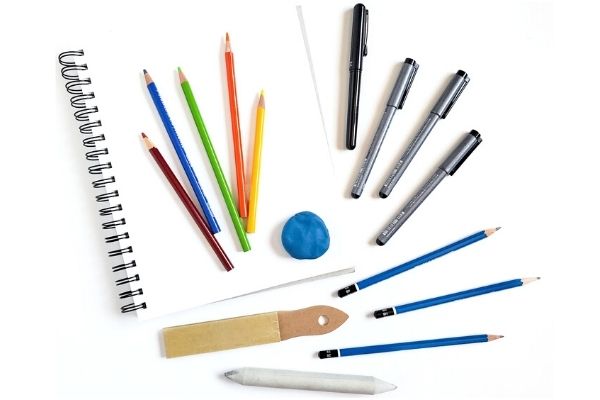
3. Drawing Teaches You About Value
Watercolour artists need to learn how to draw because doing so helps you understand value, light, and shadow more easily.
So lets take a moment to define what value is.
In simple terms, value refers to the lightness or darkness of a colour.
Personally, I believe that learning about value is more important than colour. As such, learning how to draw with graphite before you dive into watercolours is advantageous because you learn to work with greyscale before diving straight into colour.
If you don’t understand how to use values in your artwork, then no amount of colour theory fundamentals or colour mixing knowledge will save you from using poor values in your artwork.
For example, if your values look too similar, flat, or dull, then your painting will lack contrast and depth. That means your paintings are likely to look less esthetically appealing.
So do yourself a favour and learn about monochromatic values before you dive into colour.
4. You Sharpen Your Observational Skills
I’m not saying that you can’t develop your observational skills by studying paintings. Because you can. But not in the same way or to the same degree as you can with drawings.
As I previously mentioned, when you sit down to study a black and white image, you’re able to see the range of light to dark values very accurately.
In this way, you’re able to observe and perceive the subject matter in a way that’s more accessible than if you only studied a colourful watercolour painting with all its transparent layers.
For this reason, sharpening your observational skills is an effective way to get better at drawing quickly.
When you study black and white drawings, you’re able to notice the details and textures more easily. And you’re able to create a value scale that’s more consistent.
Why? Because your brain isn’t overwhelmed by all the extra visual information that’s present in colourful watercolour paintings.
Therefore, studying black and white images, creating greyscales, and working with graphite are all excellent ways to sharpen your observational skills.
In the long run, you’ll also improve your accuracy because you’ll be able to judge space, proportions, and perspective more accurately.
Related: Check out these 4 step-by-step drawing tutorials to learn how to draw simple subject matter. This tutorial is perfect for beginners!
5. Drawings Can Be Erased
In the art world, it’s commonly believed that watercolour is hard to learn. This isn’t true for everyone, but it’s common for many artists to believe that watercolour is unforgiving or intimidating.
On the other hand, drawing doesn’t have the same reputation. In fact, drawing is a very forgiving medium!
One of the biggest advantages for artists—especially beginners—is that drawings can be erased.
That means drawing is easier to approach from both a mental and emotional perspective because mistakes can be easily corrected. There’s less pressure to “get everything right” the first time.
As a result, drawing is versatile because being able to erase graphite means you can:
- Erase lines easily
- Redo the shading if it doesn’t look right
- Modify the proportions
- Change the composition
- Lighten or darken the values
But when it comes to watercolours, it’s a lot harder to fix watercolour mistakes if you don’t know what you’re doing. And it’s not always an intuitive process.
When you learn from your mistakes in a forgiving medium like drawing, you can easily transfer those skills over to watercolours, which reduces your probability of making mistakes with this wet medium.

6. Drawing Has Less Resistance Than Watercolours
An overlooked reason why watercolour artists need to learn how to draw is that artists often have less resistance to drawing than painting.
For instance, when you paint with watercolours, you have to spend some time setting up your workspace. You need to:
- Set up your desk
- Prepare your watercolour paper by taping it down or stretching it
- Fill two jars/cups with clean water
- Activate your paints (if necessary)
- Premix the colours you’ll be using
- Clean your brushes
- Take out additional supplies such as gouache, masking fluid, etc.
It can be quite a hassle. I’ll admit that sometimes I choose not to paint because I’m too lazy to set up my workspace.
Luckily for drawing, this resistance doesn’t exist. Well, it probably doesn’t exist for most artists.
Why? Because there’s hardly any set up time. You just open your sketchbook or take out a piece of paper, grab your pencil and eraser, and you start. It takes 10 seconds to get started!
As well, you only need 3 drawing supplies to get started: a pencil, an eraser, and some paper (or a sketchbook).
That means artists are likely to have significantly less resistance to drawing because the set up and clean up times are minimal.
Related: Check out this helpful blog post to learn about how it’s easier to develop a daily art practice when there’s little to no resistance to get started.
7. You Don’t Have to Rely on People’s Line Drawings
I want to be clear by saying that there’s nothing wrong with using line drawings to create art.
Line drawings help you make art faster and more accurately when you don’t have a lot of time to plan the composition.
This fact makes line drawings great learning tools for beginners, hobbyists, and advanced artists.
But if you want to level up your art skills, it’s a good idea to develop your drawing skills to the point where you don’t need to rely on other people’s line drawings for everything.
For instance, if you learn how to draw portraits and animals, then you don’t need to rely on other artists’ premade drawings.
In these circumstances, you only need to rely on other artists’ line drawings if you’re creating art involving subject matter that is beyond your skillset.
Conclusion
Although it’s technically not necessary for artists to develop drawing skills, I believe watercolour artists need to learn how to draw because basic drawing skills are transferable to all art mediums.
At minimum, watercolour artists should develop basic drawing skills because by doing so, you’re able to create thumbnail sketches with ease and you’re able to sketch a decent composition upon which to build your painting.
What’s more, it’s easier to develop an understanding of values when you work with graphite and greyscales as opposed to starting off by tackling the HUGE topic of colour theory.
All in all, keep in mind that it doesn’t have to be an either/or situation because you can definitely learn how to draw and how to paint at the same time!
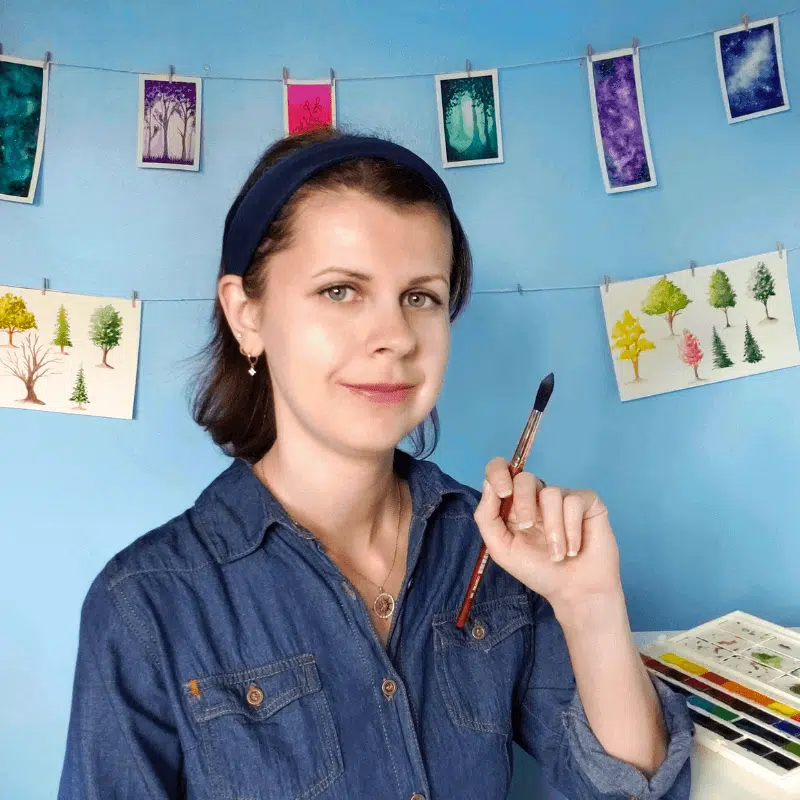
Miranda Balogh
Artist & Online Educator

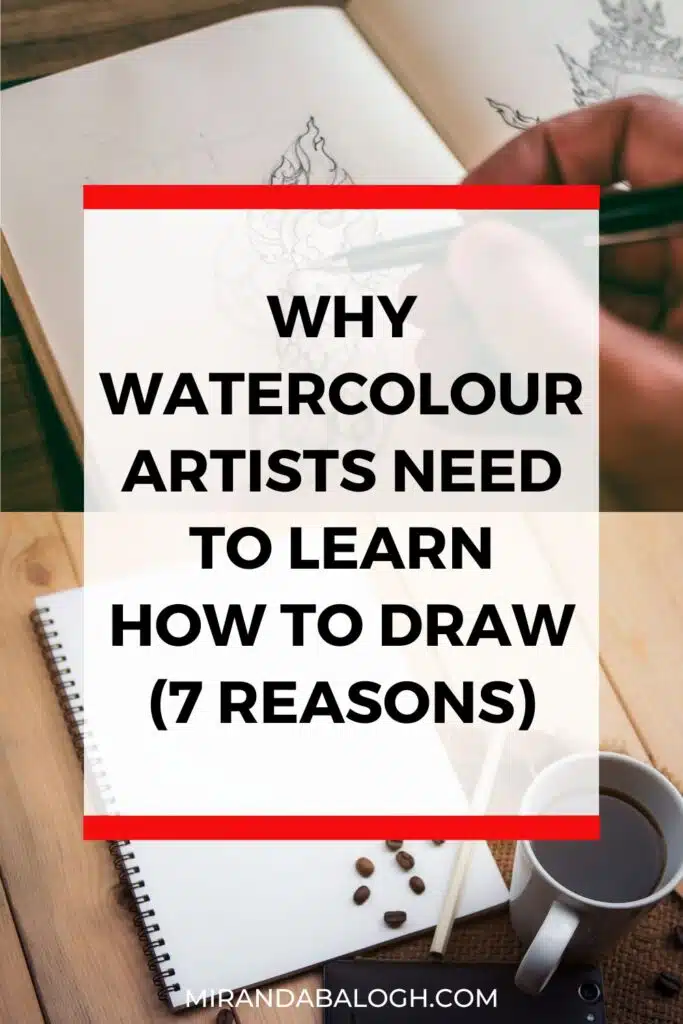
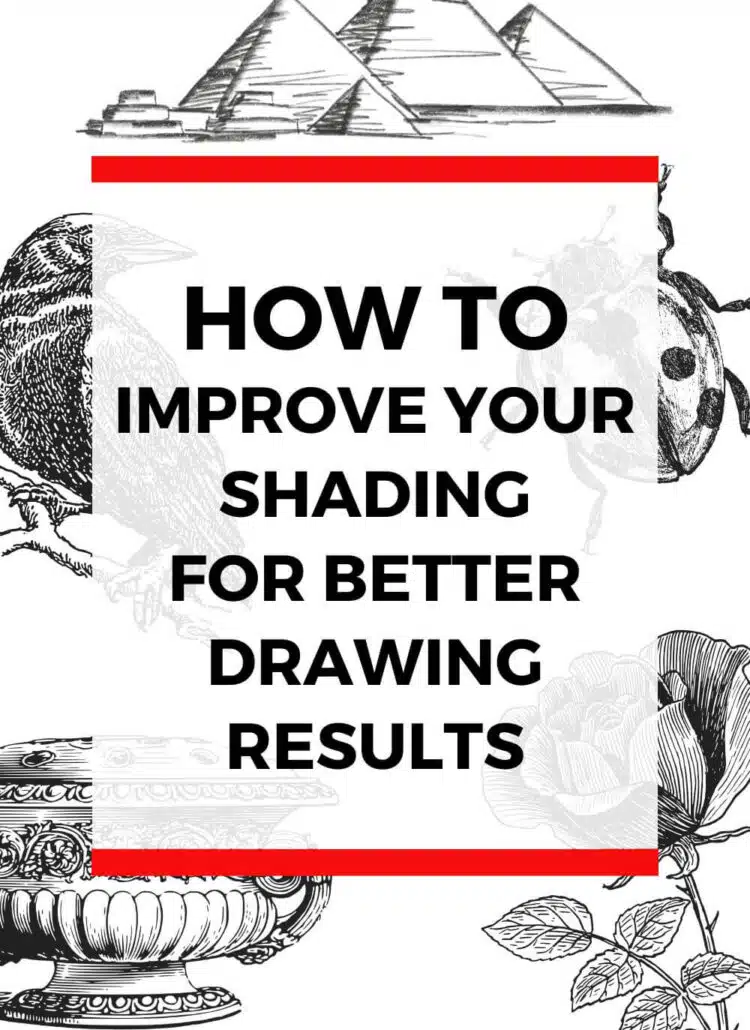
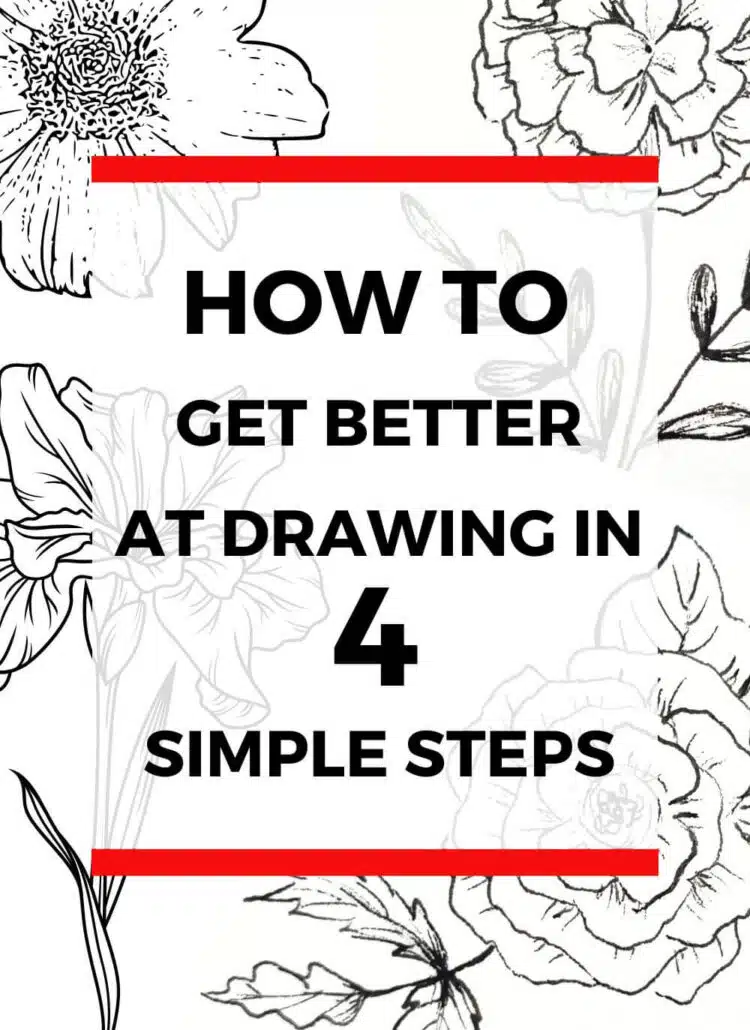
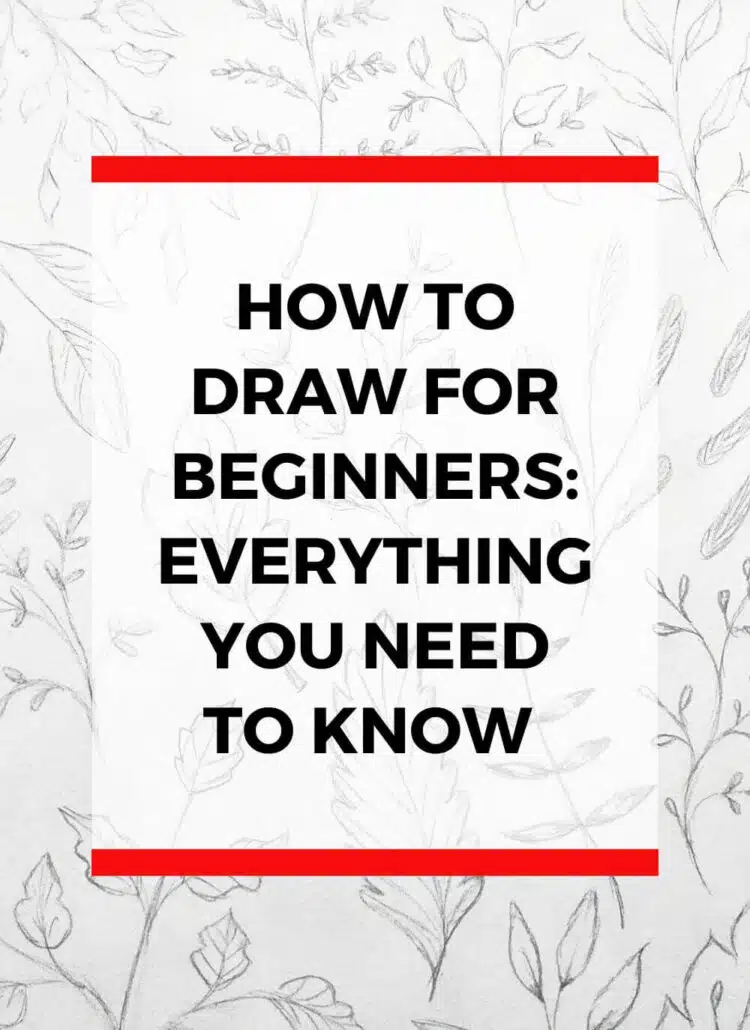
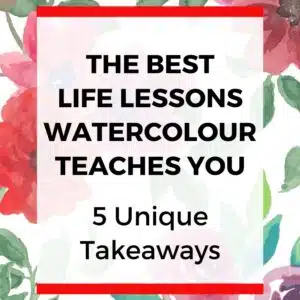
Leave a Reply